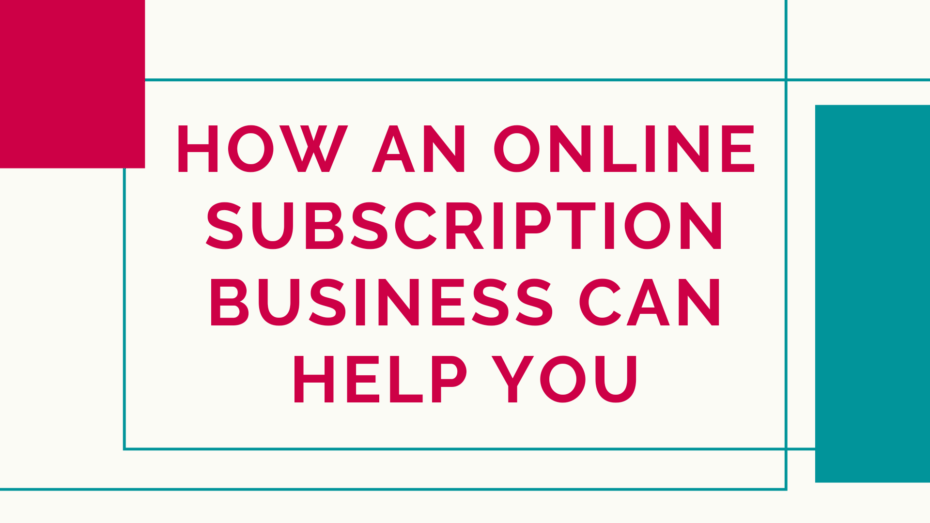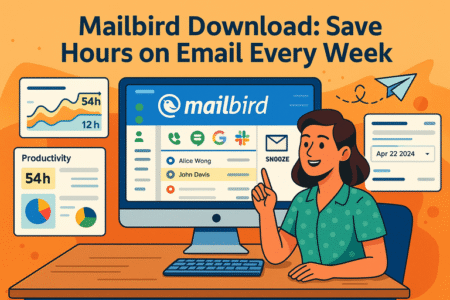Table of Contents
The rise of online subscription businesses has revolutionized how we consume products and services. From streaming platforms to monthly meal kits, this model offers convenience, variety, and value. Let’s explore how an online subscription business can benefit you and help you grow.
Understanding the Online Subscription Business Model
An online subscription business model involves offering products or services to customers on a recurring basis. This model can include various offerings, such as digital content, physical products, or exclusive services, providing continuous value to subscribers. By understanding the key components and types of subscription services, you can tailor your approach to meet the demands of your target audience effectively.
Starting an online subscription business requires a comprehensive strategy, including market research, value proposition development, and technological infrastructure. Successful subscription businesses leverage data analytics to understand subscriber behavior and preferences, enabling continuous improvement and customization of offerings.
Key Components of a Successful Subscription Business
At the core of a successful subscription business are a compelling value proposition, seamless user experience, and reliable fulfillment processes. The value proposition should clearly articulate the benefits and unique features of your subscription service, enticing potential customers. Additionally, a user-friendly website and an efficient checkout process are crucial for converting visitors into subscribers.
Subscription businesses also need robust customer support to address any issues or concerns promptly. I suggest investing in a dedicated customer service team that can provide personalized assistance to subscribers. Moreover, utilizing a reliable payment gateway ensures smooth and secure transactions, fostering trust and satisfaction among subscribers.
Most importantly, leveraging data and analytics to understand customer preferences and behavior can drive continuous improvement. By analyzing metrics such as churn rates, customer lifetime value, and engagement levels, you can identify areas for enhancement and tailor your offerings to meet customer needs better. I believe that personalization is key to retaining subscribers and fostering long-term loyalty.
Finally, effective marketing and communication strategies are essential for attracting and retaining subscribers. Regularly engaging with your audience through email newsletters, social media, and content marketing can keep your subscribers informed and engaged with your brand.
Types of Subscription Services You Can Offer
There are various types of subscription services you can offer, each catering to different customer needs and preferences. Popular options include product subscriptions, where customers receive physical items regularly, such as beauty products, snacks, or clothing. These subscriptions often provide curated or exclusive items, adding value to the customer experience.
Digital subscriptions, such as streaming services, online courses, or software access, are also highly popular. These services offer convenience and flexibility, allowing customers to access content or tools on-demand. My suggestion is to explore niche markets where you can offer specialized digital content, catering to specific interests or professional needs.
Another option is service-based subscriptions, where customers receive ongoing services, such as fitness training, coaching, or consulting. These subscriptions often emphasize personalized attention and consistent value delivery. I advise focusing on creating high-quality, engaging content and services that keep subscribers coming back.
Additionally, subscription boxes have gained traction, offering themed collections of products delivered regularly. These boxes can create excitement and anticipation, providing a delightful unboxing experience for subscribers. I strongly believe that incorporating surprise elements or limited-edition items can enhance the appeal of subscription boxes, driving customer satisfaction and loyalty.
How to Choose the Right Subscription Model for Your Business
Choosing the right subscription model for your business involves understanding your target market, assessing your resources, and aligning with your business goals. It’s essential to start by identifying your target audience’s needs, preferences, and pain points. Conducting surveys, focus groups, or market research can provide valuable insights to guide your decision-making process.
Consider your business’s strengths and capabilities when selecting a subscription model. If you excel in product curation, a subscription box might be an ideal choice. I recommend evaluating your supply chain and logistics to ensure you can consistently deliver high-quality products on time. For digital services, assess your content creation and technological infrastructure to provide a seamless user experience.
I believe flexibility is crucial in the subscription business. Offering different subscription tiers or plans can cater to a broader audience, allowing customers to choose options that best suit their needs and budget. This approach can help you attract a diverse customer base and increase your market reach.
Lastly, continuously monitor and evaluate your subscription model’s performance. I suggest gathering feedback from subscribers, tracking key metrics, and staying informed about industry trends. This proactive approach enables you to adapt and innovate, ensuring your subscription business remains competitive and aligned with customer expectations.
Advantages of Starting an Online Subscription Business
Starting an online subscription business offers numerous advantages that can significantly benefit entrepreneurs. One of the primary benefits is the ability to generate predictable revenue streams, providing financial stability and facilitating better business planning. Additionally, subscription models enable businesses to build strong, lasting relationships with customers, fostering loyalty and trust.
Moreover, online subscription businesses provide ample opportunities for growth and expansion. By continuously adapting and improving offerings based on customer feedback and market trends, businesses can scale effectively and tap into new markets. This flexibility and adaptability make subscription models particularly attractive in today’s dynamic business environment.
Predictable Revenue Streams and Financial Stability
One of the most compelling advantages of an online subscription business is the ability to generate predictable revenue streams. With subscribers committing to regular payments, businesses can enjoy a steady flow of income, reducing the uncertainty associated with traditional sales models. This predictability allows for more accurate financial forecasting and budgeting, enabling better resource allocation.
Furthermore, predictable revenue streams contribute to overall financial stability, making it easier for businesses to plan for the future. With a clear understanding of incoming revenue, businesses can invest in growth initiatives, marketing campaigns, and product development with confidence. I suggest regularly analyzing subscription data to identify trends and adjust strategies accordingly, ensuring sustained financial health.
Most importantly, a stable revenue stream provides the foundation for long-term business success. I believe that focusing on subscriber retention and satisfaction is key to maintaining this stability. By delivering consistent value and addressing customer needs promptly, businesses can minimize churn rates and foster long-term relationships with subscribers.
Additionally, predictable revenue can attract potential investors and partners, showcasing the business’s reliability and growth potential. Demonstrating consistent income streams and a loyal customer base can enhance the business’s credibility and appeal in the eyes of stakeholders.
Building Strong Customer Relationships and Loyalty
An online subscription business model inherently fosters strong customer relationships and loyalty. By providing continuous value and engaging with customers regularly, businesses can build trust and rapport with their subscribers. This ongoing interaction creates a sense of community and connection, enhancing the overall customer experience.
Personalization is a powerful tool in building customer loyalty. By tailoring offerings to individual preferences and behaviors, businesses can make subscribers feel valued and understood. My recommendation is to utilize customer data to create personalized experiences, such as customized product recommendations or exclusive content, which can significantly enhance subscriber satisfaction.
I advise implementing effective communication strategies to keep subscribers informed and engaged. Regular updates, newsletters, and social media interactions can help maintain a strong connection with your audience. Additionally, addressing customer feedback and concerns promptly can demonstrate your commitment to their satisfaction, further strengthening loyalty.
Loyal customers are more likely to refer others to your subscription service, contributing to organic growth. By nurturing these relationships and continuously delivering value, businesses can create brand advocates who actively promote their offerings, expanding their reach and customer base.
Opportunities for Business Growth and Expansion
Online subscription businesses are well-positioned for growth and expansion due to their scalable nature. As your subscriber base increases, the revenue potential grows, providing the resources needed for further development. By leveraging technology and data analytics, businesses can identify new opportunities and optimize their strategies for expansion.
Expanding your product or service offerings can attract new subscribers and retain existing ones. I suggest conducting market research to identify emerging trends and customer preferences, allowing you to introduce new features or products that resonate with your audience. Diversifying your offerings can also mitigate risks associated with market fluctuations.
I believe that strategic partnerships and collaborations can drive business growth. Partnering with complementary businesses can enhance your value proposition and reach a broader audience. For instance, collaborating with a popular brand for exclusive products can attract new subscribers and boost your market presence.
Continuous innovation is crucial for sustaining growth in an online subscription business. I strongly believe that staying ahead of industry trends and incorporating customer feedback into your development process can keep your offerings fresh and competitive. By maintaining a forward-thinking approach, businesses can adapt to changing market conditions and seize new growth opportunities.
Steps to Launch Your Online Subscription Business
Launching an online subscription business requires a strategic approach to ensure success. By following a series of well-defined steps, you can create a solid foundation for your subscription service. These steps include identifying your niche and target audience, developing a compelling subscription offer, and setting up the necessary technical infrastructure.
Understanding your niche and who you are targeting is critical to the success of your online subscription business. This involves conducting thorough market research and analyzing potential customer needs. Once you have a clear understanding, you can craft a subscription offer that meets those needs effectively.
Identifying Your Niche and Target Audience
The first step in launching a successful online subscription business is to identify your niche and target audience. A niche helps you focus your efforts on a specific segment of the market, making it easier to tailor your offerings and marketing strategies. Conducting market research is essential to understand the demand, competition, and potential customer preferences within your chosen niche.
Once you’ve identified your niche, it’s crucial to define your target audience. This involves creating detailed customer personas that represent your ideal subscribers. These personas should include demographic information, preferences, pain points, and purchasing behavior. My suggestion is to use surveys, interviews, and data analytics to gather insights about your potential customers.
Most importantly, understanding your target audience allows you to create a value proposition that resonates with them. I believe that a well-defined audience helps in crafting personalized marketing messages and developing products or services that truly meet their needs. This targeted approach increases the likelihood of attracting and retaining subscribers.
Additionally, identifying your niche and target audience can help you differentiate your subscription business from competitors. By focusing on a specific market segment and offering unique value, you can establish a strong brand presence and attract loyal customers who appreciate your specialized offerings.
Developing a Compelling Subscription Offer
After identifying your niche and target audience, the next step is to develop a compelling subscription offer. Your offer should clearly communicate the value and benefits subscribers will receive, making it irresistible to your target market. Start by outlining the core features and unique selling points of your subscription service.
A compelling subscription offer often includes exclusive content, products, or services that are not available elsewhere. I recommend focusing on the quality and uniqueness of your offerings to differentiate yourself from competitors. Additionally, consider offering tiered subscription plans to cater to different customer segments and budgets.
I would say that providing flexibility in subscription plans can attract a wider audience. Offering monthly, quarterly, and annual subscription options allows customers to choose a plan that best fits their needs and preferences. This flexibility can also help in retaining subscribers by giving them control over their commitment level.
Moreover, it’s essential to highlight the convenience and value of your subscription service. Clearly communicate how your service saves time, money, or effort compared to traditional purchasing methods. By emphasizing these benefits, you can make your subscription offer more attractive and persuasive to potential subscribers.
Setting Up the Technical Infrastructure
Setting up the technical infrastructure for your online subscription business is a crucial step in ensuring smooth operations and a positive customer experience. This includes choosing a reliable e-commerce platform, integrating a secure payment gateway, and implementing a user-friendly website design. The right technical setup can streamline your processes and enhance subscriber satisfaction.
Selecting an e-commerce platform that supports subscription services is vital. Look for features such as recurring billing, inventory management, and customer relationship management (CRM) capabilities. I advise comparing different platforms to find one that best suits your business needs and budget.
I think it’s important to invest in a secure payment gateway to protect your customers’ financial information. A reliable payment gateway not only ensures smooth transactions but also builds trust with your subscribers. Additionally, implementing automated billing and payment reminders can reduce the risk of missed payments and improve cash flow.
Lastly, focus on creating a seamless and intuitive user experience on your website. This includes easy navigation, clear calls to action, and a simple checkout process. I suggest regularly testing your website to identify and fix any usability issues. A positive user experience can significantly impact customer satisfaction and retention, contributing to the overall success of your online subscription business.
Marketing Strategies for Your Online Subscription Business
Marketing your online subscription business effectively is crucial for attracting and retaining subscribers. Implementing the right marketing strategies can help you reach a wider audience and build a loyal customer base. Key strategies include leveraging social media, running effective email marketing campaigns, and utilizing content marketing to attract and engage subscribers.
These strategies not only enhance your brand visibility but also create opportunities for direct interaction with potential and existing customers. By focusing on these areas, you can develop a robust marketing plan that drives growth and sustains your subscription business over time.
Leveraging Social Media for Subscriber Growth
Social media is a powerful tool for growing your online subscription business. Platforms like Facebook, Instagram, and Twitter provide a direct line of communication with your target audience, allowing you to share updates, promotions, and engaging content. By building a strong social media presence, you can increase brand awareness and attract new subscribers.
Creating and sharing high-quality content that resonates with your audience is essential. I recommend posting regularly and using a mix of content types, such as images, videos, and stories, to keep your audience engaged. Additionally, utilizing paid social media ads can help you reach a broader audience and drive targeted traffic to your subscription service.
Most importantly, engaging with your audience through comments, direct messages, and interactive posts can build a sense of community around your brand. I believe that responding to inquiries promptly and participating in conversations shows that you value your subscribers, which can enhance customer loyalty and retention.
Additionally, collaborating with influencers and brand ambassadors can amplify your reach. Partnering with individuals who have a strong following in your niche can introduce your subscription business to new audiences. I strongly believe that influencer marketing, when done right, can significantly boost your subscriber growth.
Effective Email Marketing Campaigns
Email marketing remains one of the most effective ways to communicate with your subscribers. A well-crafted email campaign can nurture leads, increase conversions, and retain existing customers. Start by building an email list of interested prospects and existing subscribers, ensuring you have permission to contact them.
Personalization is key to successful email marketing. I advise segmenting your email list based on subscriber behavior, preferences, and demographics to send targeted and relevant content. Personalized emails can significantly improve engagement rates and drive higher conversions compared to generic messages.
I would say that crafting compelling email content is crucial. Focus on creating valuable, informative, and entertaining emails that provide real benefits to your subscribers. This could include exclusive offers, product updates, or insightful articles related to your subscription service. Consistent and valuable communication can keep your subscribers engaged and interested in your offerings.
Additionally, monitoring and analyzing your email campaign performance is essential. Track metrics such as open rates, click-through rates, and conversion rates to understand what works and what doesn’t. I suggest using this data to refine your strategies and continuously improve your email marketing efforts.
Email Marketing Recommendations
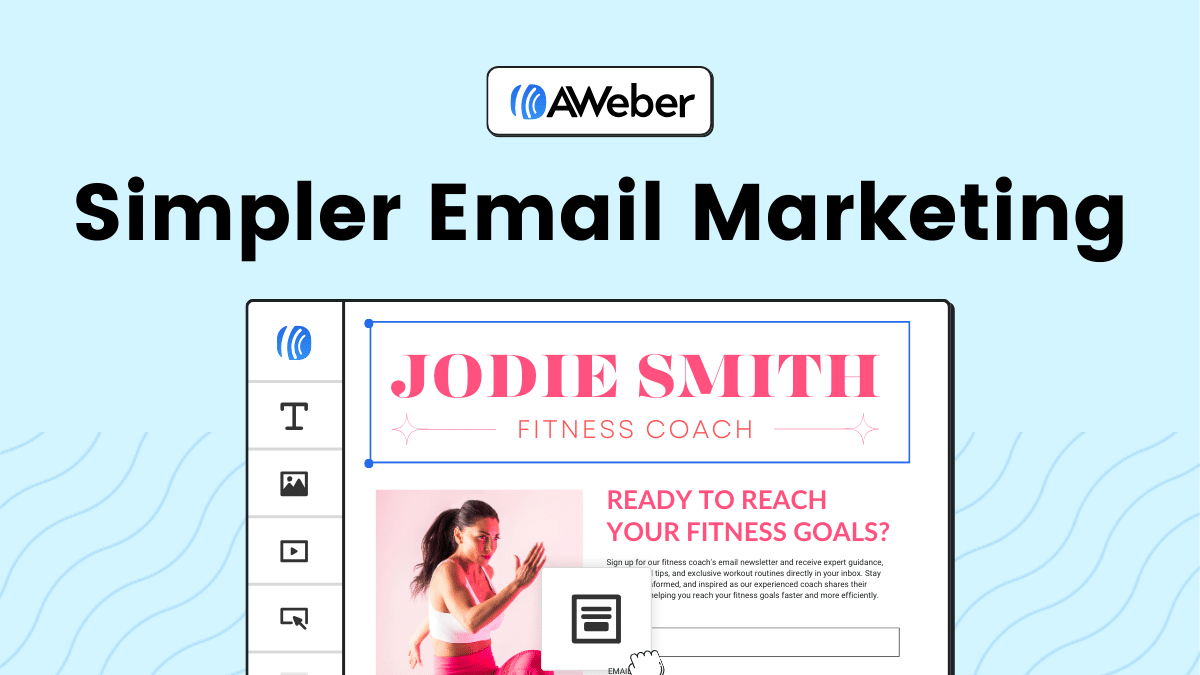 Aweber
| 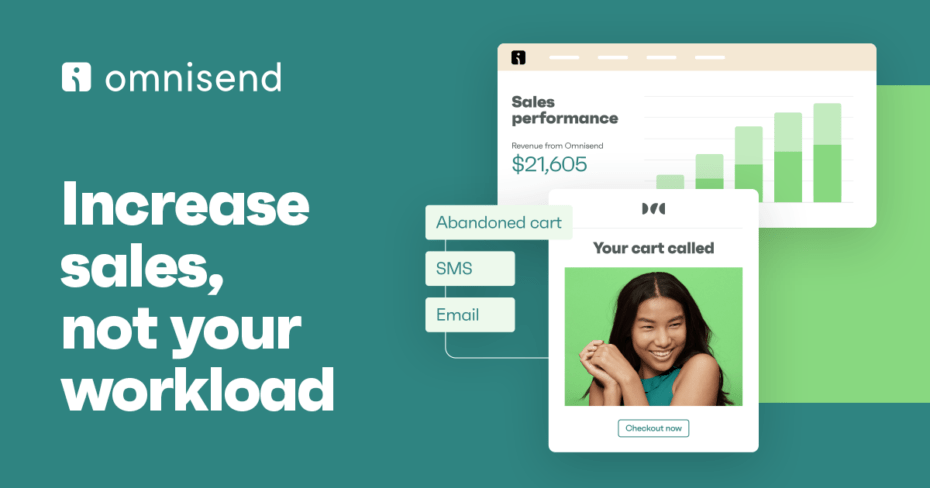 Omnisend
| 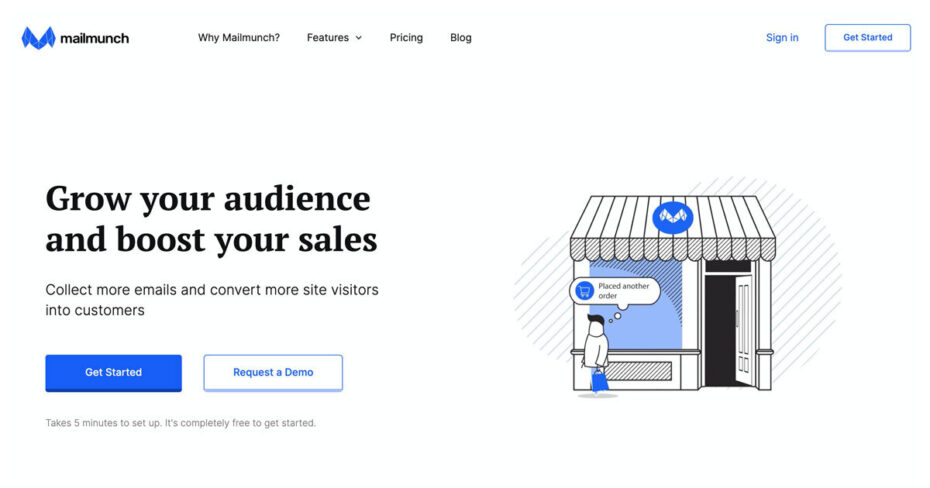 Mailmunch
|
Utilizing Content Marketing to Attract Subscribers
Content marketing is a powerful strategy for attracting and retaining subscribers to your online subscription business. By creating and sharing valuable content, you can position yourself as an authority in your niche and build trust with your audience. Start by identifying the topics and formats that resonate most with your target audience.
Creating a content calendar can help you plan and organize your content marketing efforts. I recommend producing a mix of blog posts, videos, infographics, and other content types to cater to different audience preferences. Consistently publishing high-quality content can drive organic traffic to your website and increase your visibility in search engines.
My advice is to focus on providing content that addresses the pain points and interests of your target audience. This could include how-to guides, industry insights, or case studies showcasing the benefits of your subscription service. By delivering valuable information, you can attract potential subscribers and encourage them to learn more about your offerings.
Moreover, promoting your content through various channels, such as social media, email newsletters, and guest blogging, can expand your reach. I strongly believe that a multi-channel content distribution strategy can maximize your exposure and attract a broader audience to your subscription business.
Managing and Scaling Your Online Subscription Business
Managing and scaling your online subscription business requires strategic planning and continuous improvement. As your business grows, maintaining customer satisfaction and streamlining operations become increasingly important. By focusing on key areas such as subscriber retention, performance analysis, and strategic partnerships, you can ensure sustainable growth and long-term success.
Effective management practices and a clear understanding of your business metrics are crucial for scaling. Implementing best practices and leveraging data-driven insights can help you make informed decisions, optimize processes, and maximize your business potential.
Best Practices for Subscriber Retention
Retaining subscribers is vital for the success of your online subscription business. High retention rates indicate customer satisfaction and contribute to predictable revenue streams. One effective strategy is to provide consistent value through your subscription offerings. Ensure that your products or services meet or exceed customer expectations regularly.
Engaging with your subscribers is another crucial aspect. I recommend maintaining open lines of communication through email newsletters, social media, and personalized messages. Regularly seeking feedback and addressing any concerns promptly can enhance customer satisfaction and loyalty.
Most importantly, personalizing the subscriber experience can significantly impact retention. By understanding customer preferences and behavior, you can tailor your offerings to meet their specific needs. I believe that offering exclusive content, special discounts, or early access to new products can make subscribers feel valued and appreciated.
Additionally, implementing a loyalty or rewards program can incentivize long-term subscriptions. Recognizing and rewarding loyal customers can strengthen their commitment to your business. Offering points, discounts, or special perks for continued subscriptions can be an effective way to retain subscribers and encourage ongoing engagement.
Analyzing Metrics to Improve Performance
Analyzing key metrics is essential for understanding the performance of your online subscription business. Metrics such as churn rate, customer lifetime value (CLV), and monthly recurring revenue (MRR) provide valuable insights into your business’s health. By regularly monitoring these metrics, you can identify areas for improvement and make data-driven decisions.
Tracking the churn rate helps you understand why subscribers are leaving and how to address the underlying issues. I advise conducting exit surveys to gather feedback from unsubscribed customers. Analyzing this data can reveal patterns and inform strategies to reduce churn and improve retention.
I would say that understanding the customer lifetime value (CLV) is crucial for long-term planning. CLV measures the total revenue a subscriber generates throughout their relationship with your business. By increasing CLV, you can enhance profitability and justify investments in customer acquisition and retention initiatives.
Moreover, monitoring monthly recurring revenue (MRR) provides a clear picture of your subscription business’s financial health. I suggest analyzing MRR trends to identify growth opportunities and potential challenges. This metric helps in forecasting revenue and making informed decisions about resource allocation and scaling efforts.
Regularly reviewing and analyzing these metrics can drive continuous improvement. Implementing changes based on data insights can optimize your subscription offerings, enhance customer satisfaction, and ultimately contribute to sustainable growth.
Exploring Partnerships and Collaborations for Growth
Exploring partnerships and collaborations can significantly accelerate the growth of your online subscription business. Strategic alliances with complementary businesses can expand your reach, enhance your value proposition, and attract new subscribers. Identifying potential partners whose products or services align with your offerings is the first step.
Collaborating with influencers or industry experts can boost your brand credibility and visibility. I recommend partnering with individuals who have a strong following in your niche. Their endorsement can introduce your subscription service to a wider audience and build trust with potential subscribers.
I think that co-marketing initiatives with other businesses can be mutually beneficial. Joint promotions, bundled offers, or cross-promotional content can attract new subscribers to both businesses. By leveraging each other’s customer base, you can increase your reach and enhance the value offered to subscribers.
Additionally, exploring affiliate marketing programs can drive subscriber growth. Partnering with affiliates who promote your subscription service can generate leads and conversions. Offering competitive commissions and providing affiliates with marketing resources can incentivize them to actively promote your business.
Strategic partnerships and collaborations can open new avenues for growth and innovation. By working together with like-minded businesses and influencers, you can enhance your subscription offerings, expand your market presence, and achieve long-term success.


